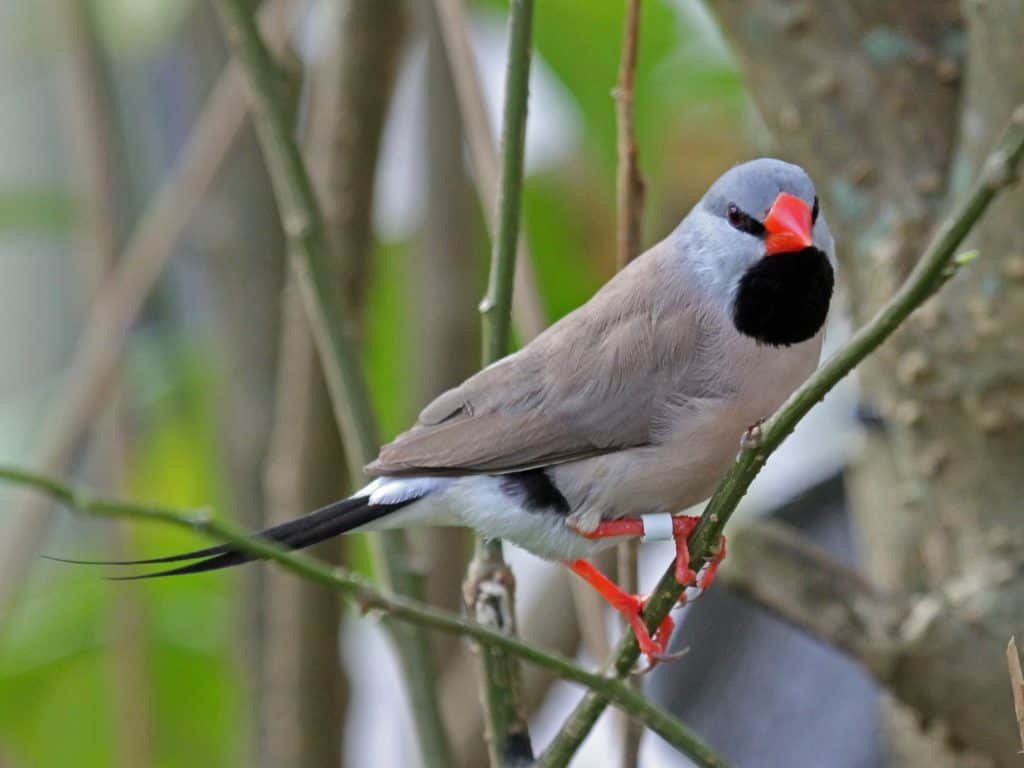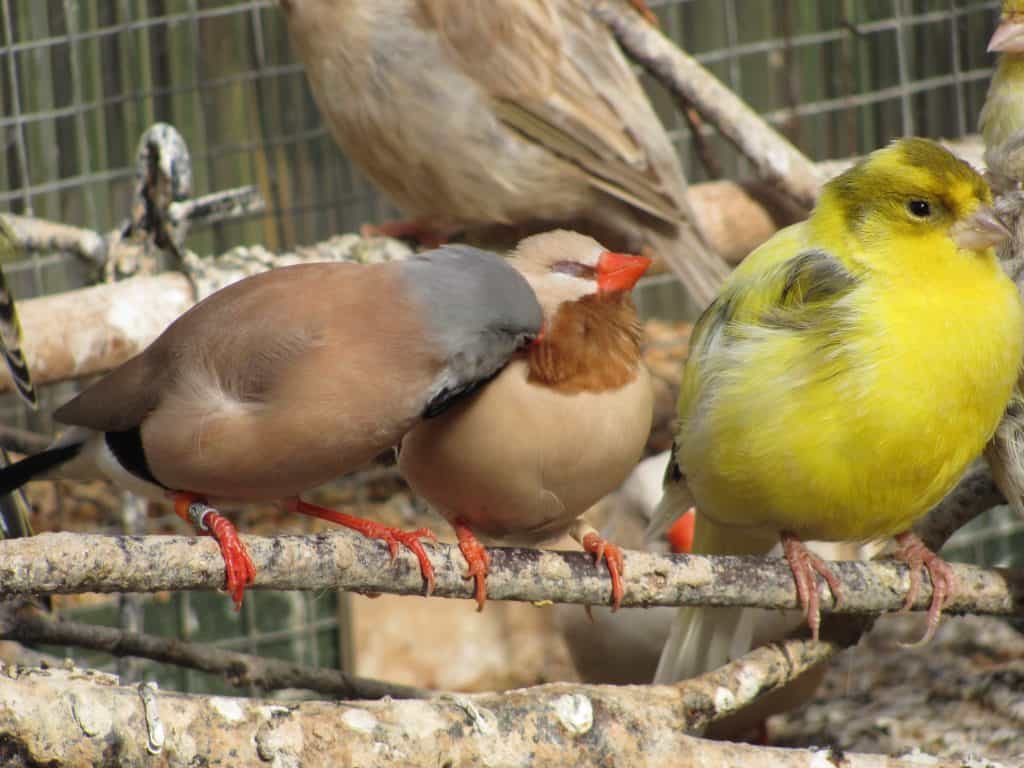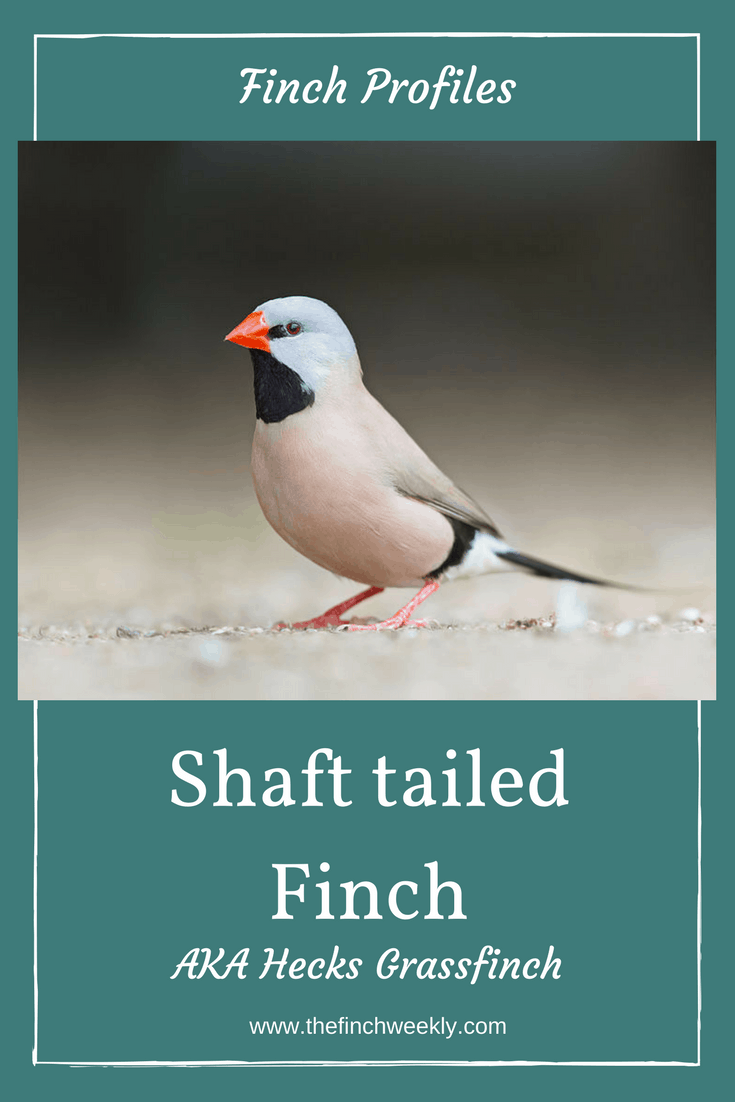The Long Tailed Finch (Poephila acuticauda) is also known as the shaft tailed finch and also as the Heck’s Grassfinch. The latter is the name I know this bird by so I’m going to use it from now on to avoid confusion, as most people who keep and breed birds will be familiar with the name. This little finch is a member of the extensive Estrildid family of finches and is native to Australia.
Description
The Hecks is around 6 inches in length and has a prominent black bib on the top of its chest as well as the long, pointed tail that provides it with two of its names. The upperparts are a pinkish brown with paler parts below this and a grey head. The lores are black and there is a white ear patch while the upper flanks also have black patches with a white rump. The beak colour can vary from a bright red right through to yellow depending on the subspecies, with the red beaked birds technically being called the Hecks subspecies while the long tailed subspecies has a yellow beak.

The Hecks is from the same family as the Black Throated or Parsons Finch and the Masked Grassfinch, so cross breeding between these species can occur.
Mutations

There are currently a number of mutations available. These include:
- Fawn – paler, tawny version of the normal bird where the black of the throat and thighs becomes a dark brown. Also called Isabel.
- Cream – all of the bird becomes an off-white apart from the black areas that become light brown
- White – all of the bird becomes white and the black markings are hardly visible
In the wild
In the wild, these birds live across northern Australia from Derby to the Leichardt River in northern Queensland. They live in woodland in groups and when meeting a new bird for the first time can engage in courtship behaviour as they cannot tell the gender of the new bird any easier visually than we humans can. Male birds will sometimes even refrain from singing until they are accepted into the group.
Their natural nesting spot in a tree hollow where both birds share incubation and rearing responsibilities. They have 4-6 white oval eggs that are incubated for 13-17 days.
Keeping shaft tailed finch
As a rule, these birds do well in captivity and can be kept either in aviary cages as a single pair or in flights as a colony. They can be mixed with other birds with little problems though their curious nature can sometimes unsettle very skittish birds. They are very active so need plenty of room, therefore a smaller breeding cage may not be ideal and they can also damage their tails if they don’t have enough space.
These birds form strong pair bonds and I have seen the case when one bird was injured and in a hospital cage, I had to move it into the flight so her mate could sit beside the cage and talk to her because he was getting so distressed. He could hear her but not see or reach her and settled immediately once she was within his sight. It was interesting to note at this point, that the other pair in the same flight also visited the injured bird and all three would be sitting around the outside of the cage.
Their diet is a typical finch diet and they will thrive on a good quality foreign finch food with egg food, grit and fresh greens such as spinach and kale. They like to bathe so need access to fresh drinking and bathing water.
Breeding
Shaft tailed finch often like to go down and hide in their nest so a finch box with a hole in the top is a good option. One of my pairs has taken to a budgie box that is crammed with nesting material in a similar manner. They use coconut fibre, grasses and soft materials to fill the nest but aren’t master nest builders like some finches. They eat an increased amount of egg food while rearing the young but don’ have requirements for live food.
After the initial 13-17 days incubation, the chicks will hatch and be fed by both parents. Fledging takes place at around 21 days and is about the same period again before the young are independent of their parents. This is longer than some finches and seems to be as much psychological as physical, as they can feed themselves well before this time.

Thank you so interesting I have recently purchased a pair they are delightful just trying to find best nest thing for them to put in cage
Cherylyn
will these breed with zebra finches?
Buenas quería saber si puedo cruzar el pinzón de heck con otra especie